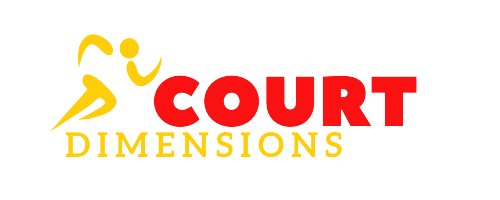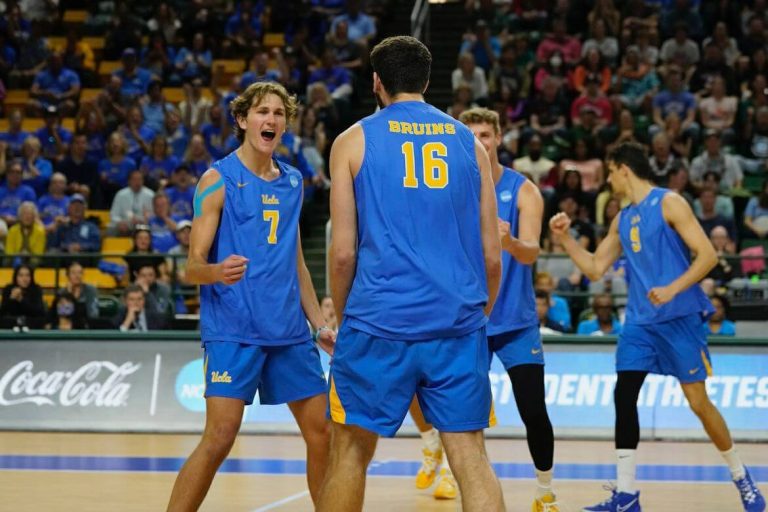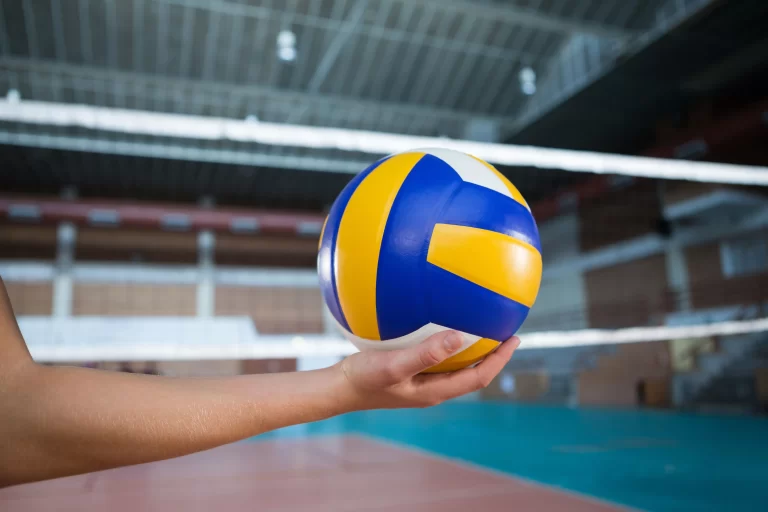Θέσεις και ρόλοι στο βόλεϊ (2023): Ολοκληρωμένος οδηγός

Είστε σκληροπυρηνικός οπαδός του βόλεϊ που επιθυμείτε να εξερευνήσετε περαιτέρω τον κόσμο αυτού του συναρπαστικού αθλήματος; Η κατανόηση των διαφόρων θέσεων βόλεϊ και των λειτουργιών τους είναι ζωτικής σημασίας για να ζήσετε το παιχνίδι στο έπακρο, είτε είστε παίκτης, προπονητής ή απλώς παρατηρητής. Θα σας ταξιδέψουμε στην πολυπλοκότητα των θέσεων βόλεϊ , δίνοντας φως στα καθήκοντα που έχει κάθε παίκτης και στον κρίσιμο ρόλο που διαδραματίζει στην επίτευξη της επιτυχίας της ομάδας.
Εισαγωγή θέσεων βόλεϊ
Το βόλεϊ είναι κάτι περισσότερο από το να παίζετε και να σερβίρετε. Είναι μια συμφωνία συγχρονισμένων προσπαθειών, με κάθε παίκτη να παίζει σημαντικό ρόλο. Η κατανόηση των διάφορων ρόλων των θέσεων του βόλεϊ είναι κρίσιμη για την καλή συνεργασία και την επιτυχία στο γήπεδο. Ας ρίξουμε μια πιο προσεκτική ματιά σε αυτές τις θέσεις, δίνοντας έμφαση στις ικανότητες, τις τεχνικές και τη συνεργασία που τις καθιστούν τόσο σημαντικές σε ένα παιχνίδι.
1. Το Σέττερ
Ευθύνες και Δεξιότητες
Ο σέττερ, που συνήθως αναφέρεται ως ο στρατηγός της ομάδας, είναι καθοριστικός στη διαχείριση της επίθεσης. Το βασικό τους καθήκον είναι να χτυπήσουν την μπάλα με ακρίβεια για να δημιουργήσουν καταστροφικές επιθέσεις. Αυτό απαιτεί εξαιρετικό συντονισμό χεριού-ματιού, γρήγορη σκέψη και φυσική αντίληψη του ρυθμού του παιχνιδιού. Οι σέτερ πρέπει επίσης να επικοινωνούν αποτελεσματικά με τους συναδέλφους τους για να παρέχουν μια ομαλή μετάβαση μεταξύ πάσες και σετ.
Τεχνικές Ρύθμισης
Οι ρυθμιστές χρησιμοποιούν διάφορες τεχνικές ρύθμισης όπως “overhead pass” και “handset”. Η εναέρια πάσα χρησιμοποιείται όταν η μπάλα βρίσκεται πάνω από το κεφάλι του παίκτη, ενώ το ακουστικό περιλαμβάνει τη χρήση της τοποθέτησης των δακτύλων για την καθοδήγηση της τροχιάς της μπάλας. Η εκμάθηση αυτών των τεχνικών απαιτεί αυστηρή εξάσκηση και οξεία αίσθηση του χρόνου.
2. The Outside Hitter
Ρόλος στο Δικαστήριο
Ο εξωτερικός χτυπητής, γνωστός και ως ο αριστερός χτυπητής, είναι μια κυρίαρχη επιθετική δύναμη. Ο ρόλος τους περιλαμβάνει δυνατές επιθέσεις από την αριστερή πλευρά του γηπέδου, με στόχο να διεισδύσουν στην άμυνα του αντιπάλου. Οι εξωτερικοί χτυπητές πρέπει να διαθέτουν εξαιρετική ικανότητα άλματος, ακρίβεια χτυπήματος και ικανότητα προσαρμογής σε διάφορες στρατηγικές μπλοκαρίσματος.

Στρατηγικές επίθεσης
Οι εξωτερικοί χτυπητές χρησιμοποιούν μια ποικιλία επιθετικών μεθόδων, συμπεριλαμβανομένων των «βολών διασταύρωσης» και «βολών γραμμής». Αυτές οι στρατηγικές τους δίνουν τη δυνατότητα να εκμεταλλευτούν τις τρύπες στην άμυνα του αντιπάλου. Οι εξωτερικοί παίκτες πρέπει να μπορούν να διαβάζουν το μπλοκ του αντιπάλου τους και να προσαρμόζουν κατάλληλα τα χτυπήματά τους.
3. Ο μεσαίος μπλοκαδόρος
Αμυντικά και Επιθετικά καθήκοντα
Ο μεσαίος μπλοκέρ, τοποθετημένος στο κέντρο του φιλέ, παίζει κρίσιμο διπλό ρόλο. Αμυντικά, στοχεύουν να μπλοκάρουν τις επιθέσεις του αντιπάλου, διαταράσσοντας την επιθετική τους ορμή. Επιθετικά, συμμετέχουν σε γρήγορες επιθέσεις, απαιτώντας ακριβή συγχρονισμό και συντονισμό με τον σέτερ.
Στρατηγικές αποκλεισμού
Τα μεσαία blockers χρησιμοποιούν μια ποικιλία τεχνικών μπλοκαρίσματος, συμπεριλαμβανομένου του “single block” και του “closing the seam”. Αυτές οι στρατηγικές έχουν σχεδιαστεί για να εμποδίζουν τις γωνίες του επιτιθέμενου και να περιορίζουν τις δυνατότητές τους. Ο αποτελεσματικός αποκλεισμός απαιτεί προνοητικότητα και λήψη αποφάσεων σε κλάσματα δευτερολέπτου.
4. Ο αντίθετος χτυπητής
Ευελιξία και Αντίκτυπος
Ο αντίθετος χτυπητής, ή ο δεξιός χτυπητής, φέρνει ευελιξία στην επιθετική τακτική της ομάδας. Συχνά συνεισφέρουν δυνατά χτυπήματα από τη δεξιά πλευρά, δημιουργώντας μια ισορροπημένη επιθετική προσέγγιση. Ο αντίθετος παίκτης πρέπει να υπερέχει τόσο στην επίθεση όσο και στο μπλοκ, προσφέροντας ένα ολοκληρωμένο σύνολο δεξιοτήτων.

Τακτικές εξυπηρέτησης
Οι αντίπαλοι παίκτες χρησιμοποιούν διαφορετικές τακτικές σερβιρίσματος, συμπεριλαμβανομένων των “float serve” και “jump serve”. Ένα καλά εκτελεσμένο σερβίς με άλμα μπορεί να ασκήσει τεράστια πίεση στον αντίπαλο, ενώ ένα float σερβίς εστιάζει στην κίνηση της μπάλας και στο απρόβλεπτο.
5. Ο Λίμπερο
Ειδικός Άμυνας
Ο λίμπερο είναι ένας αμυντικός ειδικός υπεύθυνος για το σκάψιμο και το πέρασμα. Φορώντας διαφορετική φανέλα, δεν μπορούν να εκτελέσουν επιθετικά χτυπήματα από την πρώτη σειρά. Οι λίμπερο επιδεικνύουν εξαιρετικά αντανακλαστικά, ευελιξία και έλεγχο της μπάλας, γεγονός που τους καθιστά ανεκτίμητο πλεονέκτημα στο πίσω γήπεδο.
Τεχνικές εκσκαφής και διέλευσης
Οι λίμπερο χρησιμοποιούν τεχνικές όπως “πάσα με το χέρι” και “πασάρισμα με αντιβράχιο” για να διατηρήσουν τον έλεγχο της μπάλας κατά τη διάρκεια σκάψεων και πάσες. Αυτές οι τεχνικές απαιτούν ακρίβεια και γρήγορες αντιδράσεις για να κρατηθεί η μπάλα στο παιχνίδι.
6. Ο Αμυντικός Ειδικός
Αριστεία backcourt
Οι ειδικοί της άμυνας συμβάλλουν στη σταθερότητα του πίσω γηπέδου της ομάδας. Εστιάζουν στο σκάψιμο και στο πασάρισμα, διασφαλίζοντας ότι ο σέτερ λαμβάνει ακριβείς μπάλες για στήσιμο. Η έντονη αίσθηση της θέσης και της προσμονής είναι ζωτικής σημασίας για την επιτυχία τους.
Τακτικό σκάψιμο
Οι ειδικοί της άμυνας χρησιμοποιούν τακτικό σκάψιμο για να κατευθύνουν την μπάλα σε συγκεκριμένες περιοχές του γηπέδου, επιτρέποντας στους συμπαίκτες να εκτελούν αποτελεσματικά παιχνίδια. Αυτή η στρατηγική προσέγγιση προσθέτει βάθος στις αμυντικές δυνατότητες της ομάδας.
7. Δυναμική και Συντονισμός Ομάδας
Επικοινωνία
Οι επιτυχημένες ομάδες βόλεϊ βασίζονται στην αποτελεσματική επικοινωνία. Για να συντονίσουν τις κινήσεις, να υποδείξουν παιχνίδια και να προσφέρουν ανατροφοδότηση σε πραγματικό χρόνο, οι παίκτες πρέπει να διατηρούν συνεχή λεκτική και μη λεκτική επικοινωνία.

Περιστροφή και τοποθέτηση
Η κατανόηση της περιστροφής και της τοποθέτησης είναι απαραίτητη για τη διατήρηση της βέλτιστης κάλυψης του γηπέδου. Οι παίκτες πρέπει να ξέρουν πού να βρίσκονται ανά πάσα στιγμή, διασφαλίζοντας απρόσκοπτες μεταβάσεις κατά τη διάρκεια των ράλι και ελαχιστοποιώντας τα κενά στην άμυνα.
8. Σημασία Εξειδίκευσης
Αξιοποιώντας τα δυνατά σημεία
Οι ομάδες ευδοκιμούν όταν οι παίκτες ειδικεύονται σε συγκεκριμένους ρόλους. Αυτό τους επιτρέπει να αξιοποιούν τις ατομικές δυνάμεις για το συλλογικό καλό. Οι εξειδικευμένοι παίκτες φέρνουν μοναδικές δεξιότητες που συμβάλλουν σε μια ολοκληρωμένη δυναμική της ομάδας.
Προσαρμοστικότητα στη Στρατηγική
Ενώ η εξειδίκευση είναι ζωτικής σημασίας, η προσαρμοστικότητα είναι εξίσου σημαντική. Οι ομάδες πρέπει να είναι έτοιμες να προσαρμόσουν τις στρατηγικές που βασίζονται στην ανάλυση του αντιπάλου και στην αλλαγή των καταστάσεων του παιχνιδιού, διασφαλίζοντας μια ευέλικτη προσέγγιση για την εξασφάλιση της νίκης.
9. Στρατηγικές για ισορροπημένο παιχνίδι
Ανάμειξη επιθετικών και αμυντικών παικτών
Μια επιτυχημένη ομάδα επιτυγχάνει μια ισορροπία μεταξύ επιθετικής και αμυντικής ικανότητας. Συνδυάζοντας παίκτες με δυνατές επιθετικές ικανότητες και άλλους με εξαιρετικές αμυντικές ικανότητες, οι ομάδες μπορούν να δημιουργήσουν μια τρομερή δύναμη στο γήπεδο.

Εκμετάλλευση των αδυναμιών του αντιπάλου
Η ανάλυση των αδυναμιών των αντιπάλων είναι ένα στρατηγικό πλεονέκτημα. Οι ομάδες μπορούν να εκμεταλλευτούν τα τρωτά σημεία στην τοποθέτηση, το μπλοκ ή το σερβίς του αντιπάλου για να κερδίσουν το πάνω χέρι και να υπαγορεύσουν τη ροή του παιχνιδιού.
συμπέρασμα
Στον περίπλοκο χώρο του βόλεϊ, κάθε θέση συμβάλλει μοναδικά στην επιτυχία της ομάδας. Από σέττερ που ενορχηστρώνουν παιχνίδια μέχρι αμυντικούς ειδικούς που εξασφαλίζουν στιβαρή άμυνα πίσω γηπέδου, κάθε παίκτης διαδραματίζει ζωτικό ρόλο. Η αποτελεσματική επικοινωνία, οι ακριβείς τεχνικές και ο συνδυασμός εξειδίκευσης και προσαρμοστικότητας είναι οι ακρογωνιαίοι λίθοι μιας νικήτριας ομάδας. Έτσι, είτε είστε παίκτης, προπονητής ή θεατής, αφιερώστε λίγο χρόνο για να εκτιμήσετε τον περίπλοκο χορό των θέσεων που κάνουν το βόλεϊ ένα συναρπαστικό και συναρπαστικό άθλημα.
Συχνές ερωτήσεις (Συχνές ερωτήσεις)
- Ποια είναι η πιο κρίσιμη ικανότητα για έναν σέτερ; Η πιο κρίσιμη ικανότητα για έναν σέττερ είναι η ακριβής τοποθέτηση της μπάλας, η οποία επηρεάζει άμεσα την επιθετική στρατηγική της ομάδας.
- Μπορεί ένας εξωτερικός χτυπητής να παίξει και ως μεσαίος μπλοκέρ; Ενώ ορισμένοι παίκτες μπορεί να έχουν την ευελιξία να παίζουν πολλές θέσεις, οι εξωτερικοί παίκτες και οι μεσαίοι μπλοκέρ έχουν συνήθως ξεχωριστά σετ δεξιοτήτων προσαρμοσμένα στους ρόλους τους.
- Τι κάνει έναν επιτυχημένο λίμπερο; Ένας επιτυχημένος λίμπερο διαθέτει εξαιρετικά αντανακλαστικά, ευκίνητη κίνηση και άψογο έλεγχο της μπάλας για να διαπρέψει σε αμυντικά καθήκοντα.
- Πώς αποφασίζουν οι ομάδες για τη σειρά εναλλαγής τους; Η σειρά περιστροφής καθορίζεται συχνά με βάση τις τακτικές προτιμήσεις της ομάδας και τις δυνάμεις των μεμονωμένων παικτών.
- Είναι πιο σημαντική η εξειδίκευση από την πολυχρηστικότητα στο βόλεϊ; Τόσο η εξειδίκευση όσο και η ευελιξία έχουν τα πλεονεκτήματά τους. Ενώ η εξειδίκευση κεφαλαιοποιεί συγκεκριμένα δυνατά σημεία, η ευελιξία επιτρέπει στις ομάδες να προσαρμόζονται δυναμικά σε διαφορετικές καταστάσεις παιχνιδιού.






